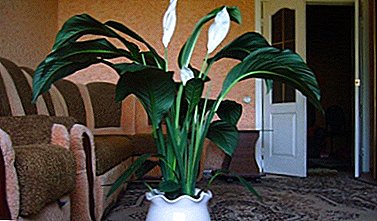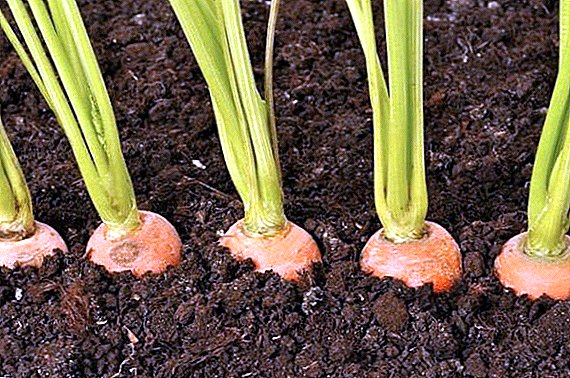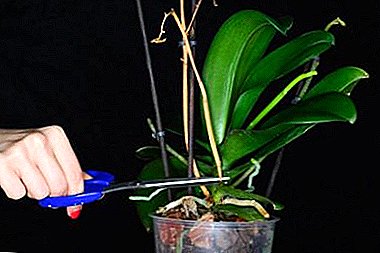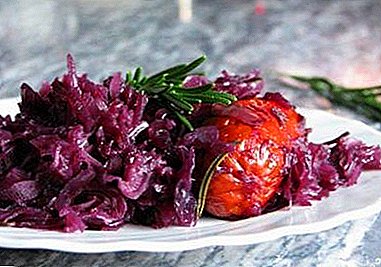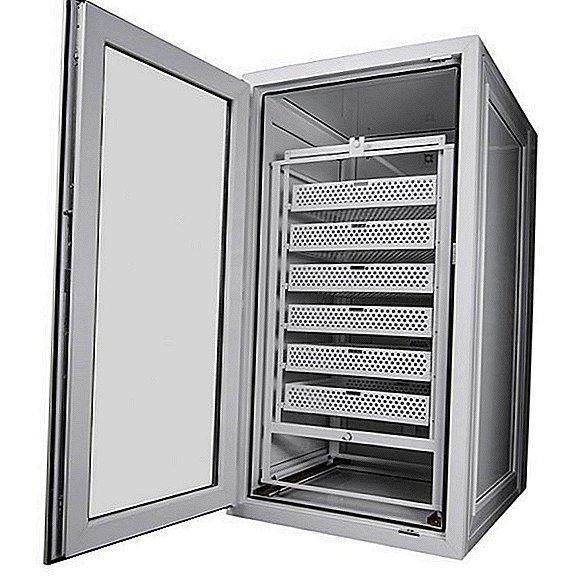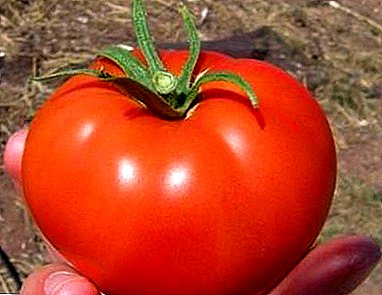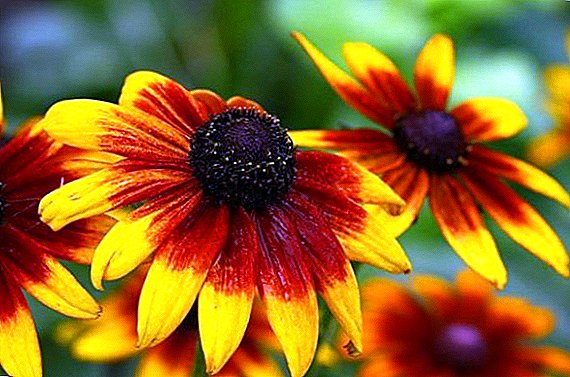 Perennial Rudbeckia is a beautiful, bright plant of the Astrov family. Comes from North America. Such a flower will be an excellent addition to any flower bed, and even a novice in floriculture can adhere to the rules of care.
Perennial Rudbeckia is a beautiful, bright plant of the Astrov family. Comes from North America. Such a flower will be an excellent addition to any flower bed, and even a novice in floriculture can adhere to the rules of care.
Did you know? Rudbeckia got its name in honor of botanists from Sweden, Olof Rudbek (who discovered the human lymphatic system) and his father. They are also the ancestors of Alfred Nobel.
Varieties of perennial Rudbeckia
In total there are about 300 species of this plant, each is attractive in its own way, but there are several that are grown most often.
Rudbeckia dissected - the kind demanding the minimum leaving can grow up to 2 m, with a horizontal rhizome. To the grades of orebecky dissected perennial include the Golden ball, Goldkvelle.
- Golden ball blooms from July to October, resistant to frost. Inflorescence terry or semi-double bright and pale yellow. Requires support due to tall growth and thin stems.
- Goldquelle variety is very similar to it, but it is short (0.8 m), blooming from August to September.
 Brilliant rudbeckia, also called radiant. The flowering period from July to September lasts 40-45 days. Low-growing, suitable for both group and single landings. Tying is not required.
Brilliant rudbeckia, also called radiant. The flowering period from July to September lasts 40-45 days. Low-growing, suitable for both group and single landings. Tying is not required.- Variety Vanabilis has narrow leaves and orange-yellow inflorescences (9 cm in diameter).
- Sullivanta variety has long leaf leaves and flowers at different heights. Will require renewal in 3-4 years.
 Hairy rudbeckia possesses plentiful and long flowering. Often used for bouquets, as it has long flower stalks. Grades:
Hairy rudbeckia possesses plentiful and long flowering. Often used for bouquets, as it has long flower stalks. Grades:- Goldstrom - a variety with dark green foliage and tough hairs on the stems.
- Maine Freude has bright yellow inflorescences (~ 10 cm in diameter). Not higher than 70 cm in height.
 Glossy rudbeckia grows to 2-2.5 m. It blooms from July to September, has bright shiny leaves and large flowers (12 cm across).
Glossy rudbeckia grows to 2-2.5 m. It blooms from July to September, has bright shiny leaves and large flowers (12 cm across).- Grade Goldshire high (2.5 m), strongly branched shrub with bright yellow flowers.
- Herbstonn is a variety whose edge flowers are strongly bent to the ground.

Planting and soil selection
Rudbeckia does not need increased attention, but it is better to choose the sunny part of the site for planting (partially shaded places are allowed). Even clay soil will be suitable for the plant if you add sand for digging, but fertile, permeable soil would be ideal. In any case, you need to fertilize the soil before planting. Planting ore beckoo in the open ground with the help of seedlings carried out in late May, the seeds - a few weeks later. If low temperatures still persist at night, the plant should be covered until it is applied. Place the pits at a distance of 30-40 cm from each other, after planting, you can mulch the soil with compost.
The subtleties of growing perennial Rudbeckia
Growing a perennial rudbeckia will not cause much trouble. But there are some nuances.
 Watering should be regular, especially if the bush grows in a sunny area. It will suffer a short-term drought, but watering is very important during the period of active growth.
Watering should be regular, especially if the bush grows in a sunny area. It will suffer a short-term drought, but watering is very important during the period of active growth.
2 times per season (growth stage and ovary) it is allowed to feed rudbeckia during watering. Take the standard fertilizer for flowering plants. Faded inflorescence should be removed for the longest possible stage of flowering and preservation of the decorative appearance. Before wintering rudbeckia pruned at the root.
Important! It will be better if, after watering, you remove weeds and loosen the soil, and high varieties (more than 80 cm) will tie up.Once every 3-5 years, orebeckia needs to be transplanted, since the root system is growing rapidly and littering the plot. The bush is simply dug, divided into several parts and transplanted to new places.
Seed collection
 Seeds are formed in September in the middle flowers in the center of the inflorescences. To collect the seeds, you need to wait until the inflorescences are completely dry when the fruits turn black. Use scissors to cut selected specimens. Wear gloves to prevent scratches. After harvesting, the seeds must be dried well on a sheet of paper for a week, and then stored in a paper bag. Additional processing is not required. Germination will continue for 2-3 years.
Seeds are formed in September in the middle flowers in the center of the inflorescences. To collect the seeds, you need to wait until the inflorescences are completely dry when the fruits turn black. Use scissors to cut selected specimens. Wear gloves to prevent scratches. After harvesting, the seeds must be dried well on a sheet of paper for a week, and then stored in a paper bag. Additional processing is not required. Germination will continue for 2-3 years.
Important! The collection should be carried out on a dry and sunny day. Material collected in wet weather may simply rot during subsequent drying and storage.
How to prepare rudbeckia for winter
Since Rudbeckia is from North America, it winters beautifully in the ground under the snow. Preparing for winter ore beck is included in trimming the plant at the root and protecting the soil by mulching with the help of a 5-7 cm layer of humus. You can also cover the plant with spruce leaves and hay, dry grass.
Two ways of breeding rudbeckia
Perennial Rudbeckia is propagated by seed or by dividing a bush.
How to collect seeds, we have already described above, but you can buy them without any difficulties. You can plant the seeds directly into the ground or grow seedlings. In open ground, seeds are not sown deep in mid-late June. Distance - about 15 cm. Sprinkled with earth and watered. Already in the fall small sockets are formed, and the next year - young bushes.
 In the seedling method, seeds are sown in the middle of spring in a container and covered with glass or film. It is necessary to grow at + 18 ° С - + 22 ° С, when shoots appear, the temperature is reduced to + 16 ° С. After 4 leaves have appeared, the seedlings swoop in hotel pots. Gradually carried out into the open air for several hours. Transplanted into the ground after passing frost.
In the seedling method, seeds are sown in the middle of spring in a container and covered with glass or film. It is necessary to grow at + 18 ° С - + 22 ° С, when shoots appear, the temperature is reduced to + 16 ° С. After 4 leaves have appeared, the seedlings swoop in hotel pots. Gradually carried out into the open air for several hours. Transplanted into the ground after passing frost.
Since it is more difficult to grow orebeckia from seeds, and at the same time there is no transfer of varietal characteristics of the mother plant, it is more often propagated by dividing the rhizomes. It is better to carry out the procedure in spring (as soon as shoots began to appear) or in autumn (after flowering). To do this, dig a bush and gently divide it into pieces. On each must remain a renewal kidney. In the fertilized, loosened earth, make a well and plant some of the rudbeckia bush.
Did you know? The first settlers called this flower "black-eyed Susanna", and the Europeans gave the name "sun hat". Today, hairy rudbeckia is a symbol of the state of Maryland, USA.
Major pests of rudbeckia
Leaf nematodes, powdery mildew, rust and leaf-eating insects are the most common pests of orebeckia.
 The appearance of brown, purple, yellow spots on the leaves indicates infection nematodes. Remove damaged and fallen leaves. Treat the plant with insecticides. Prevention is proper, not over-irrigation.
The appearance of brown, purple, yellow spots on the leaves indicates infection nematodes. Remove damaged and fallen leaves. Treat the plant with insecticides. Prevention is proper, not over-irrigation.
If you notice a white loose patina, and the foliage has become sluggish, then probably rudbeckia is struck powdery mildew. For struggle, spraying of copper sulphate (40 g per 5 l of water), as well as a solution of colloidal sulfur (1%) is suitable. Also replace the top layer of soil.
When rusty, yellow-orange color bubbles form on the leaves, it is necessary to start fighting rust (a fungal disease). It is necessary to process the fungicide bush. Weeding and proper care are prevention. Also use insecticides to combat insects.
 This plant is very resistant to pests and, with proper agricultural technology, it rarely gets sick, so the proper care is the prevention of all pests: watering, loosening the soil, removing dried inflorescences, fertilizer; as well as the burning of remote infected plant parts. It is better to dig up the affected orebeckia and cultivate the soil with a strong solution of potassium permanganate.
This plant is very resistant to pests and, with proper agricultural technology, it rarely gets sick, so the proper care is the prevention of all pests: watering, loosening the soil, removing dried inflorescences, fertilizer; as well as the burning of remote infected plant parts. It is better to dig up the affected orebeckia and cultivate the soil with a strong solution of potassium permanganate.
Perennial rudbeckia is a great choice for your garden. As described in this article, it is easy to care for her, there are many varieties for every taste, and she rarely gets sick. This sunny bush will complement any floral arrangements and will delight you until the frost.




